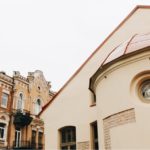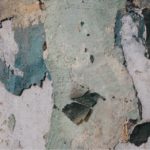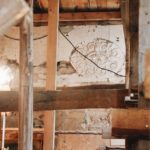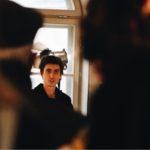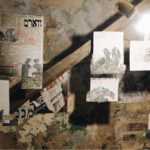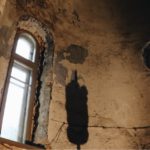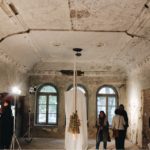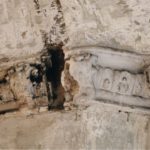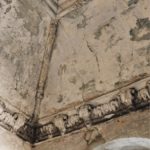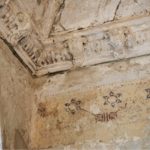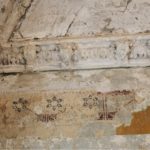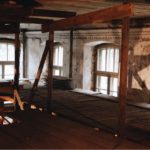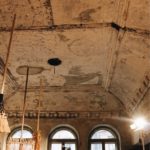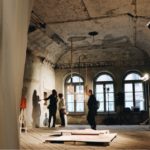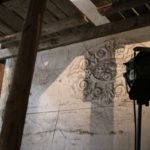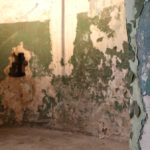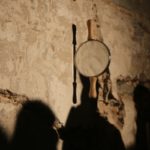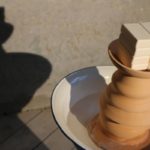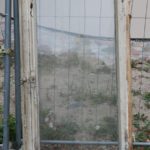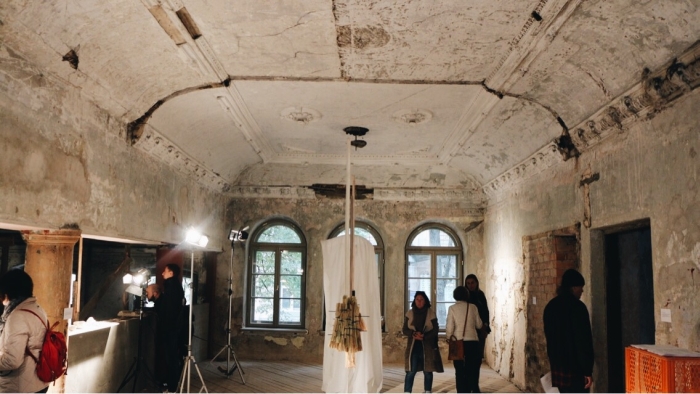
The historic Zavl synagogue near the Vilnius train station opened its doors to visitors briefly Sunday, October 1.
The building has been undergoing extensive repairs and a full restoration over the last several years after it was returned to the Lithuanian Jewish Community. Initially the LJC undertood emergency measures to fix the roof after a wind storm displaced shingles and a gaping hole appeared. Several years on now the entire external façade including walls, windows, cupola and roof have been restored to something approximating its authentic appearance before the Holocaust.
The public event featured a series of humble and eclectic art installations by a group of designers located in the women’s gallery and on the main floor.
According to the team, which includes Lithuanian and Dutch designers, the installations weren’t intended to be anything more than they were, and served as a starting point for thinking about the role the old synagogue might play in modern Vilnius.
In the women’s gallery there were two piles of sand on a white platform in the center and various small design works along the walls and in the corners, including what looked like a shower curtain and a wash basin with neatly piled bars of white soap. Inscriptions printed on very small pages described what viewers were seeing.
The bars of soap might have been considered in bad taste in the Lithuanian context only a few years ago because of anti-Semitic jokes about Jews and soap, but the new generation of artists and designers seemed blissfully unaware of that connotation. The description for Marija Puipaitė’s installation “Water” explained water was of central importance to Jewish customs and religious practices, and she said the restored synagogue needed a water supply first of all.
In the main section of the synagogue bright new nylon ropes were strung between rafters supporting construction platforms with a video presentation on a table on a central beam. The installation was about a boxing ring, but it wasn’t clear how the synagogue was ever connected with boxing, although there had been boxing matches as part of the athletics program in the Vilnius ghetto a few blocks away, and one person at the installation mentioned there had been a Litvak champion boxer from Vilnius.
Another section of the main space contained collages of Yiddish newspapers from before the war, with English translations of headlines apparently written in red nail polish over the top. During one phase of the reconstruction process a neighbor reported discovering a large collection of Lithuanian and Soviet newspapers being tossed out, but no Yiddish newspapers.
The installations were minimalist against a backdrop of construction inside the space. Catwalks filled the entire volume of the main space. The walls of the women’s gallery were a patchwork of different layers of paint with hints of the original synagogue walls peeking through the Soviet patina here and there, all covered with dust. A construction workers’ plank led from the women’s gallery to the main space and the internal courtyard, but organizers of the event had to block it off after a few guests almost injured themselves, and the main stairwell leading onto Gelių street was the only way to access the main floor by going into the street, courtyard and around.
About 50 people stood in the women’s gallery as Koen Kleijn and Vytautas Gečas briefly introduced the project. Most of those who came were young people affiliated in different ways with the artists and the Vilnius Art Academy. At the same time many Jews from Vilnius and employees of different Jewish institutions came to have a look as well, which was the entire point of the event with the art installations merely serving, as the designers themselves said, as a jumping-off point.
photos by Dovilė Abromavičiūtė


